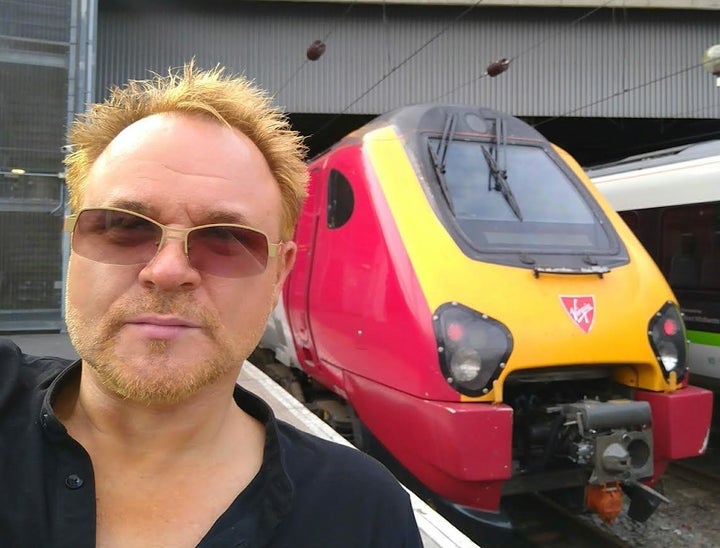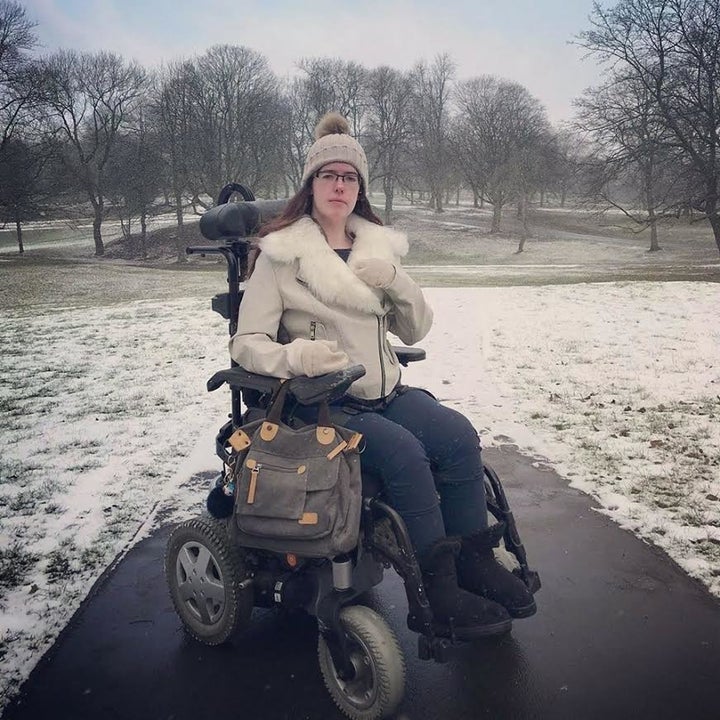Mik Scarlet is on a train to Holyhead from his home in Camden, north London. He will spend the day unable to use the toilet and, as usual, sat away from everyone else in the specified wheelchair zone, because the spaces are so poorly designed he cannot move into a seat.
Emailing HuffPost UK from the carriage where he will spend the next four hours, the 52-year old has just discovered the only accessible bathroom is out of order and he will be unable to get off the train without having a pre-booked ramp.
Scarlet, who was left with a spinal cord injury after cancer treatment, doesn’t even seem surprised by the huge inconvenience, accepting it as yet another example of the difficulties faced by full-time wheelchair users trying to navigate the UK on public transport, in particular train and tube networks.

So what are the problems? Scarlet says there are “too many to list”, but they include being left stranded on trains, fellow passengers using him as a luggage rack for their suitcases and his wheelchair being damaged by staff.
Scarlet’s experience will likely come as no surprise to many in the disabled community - especially those who have long been campaigning for greater access with groups like Transport For All.
And it’s not just long journeys that are an issue. Scarlet has also faced difficulties closer to home. “The Tube is such a nightmare, I rarely use it,” he says. “So few stations are accessible, if anything goes wrong I’m stuck. You only get stuck with no way of getting home once before you avoid it like the plague.”
A report from Muscular Dystrophy UK, called End of the Line, found as many as 25% of disabled people said their closest Tube station was out of bounds entirely, without accessible exits and entrances.
Even stations that are supposed to have accessible platforms often don’t - Brixton Tube station in south London has not had any lift service since February 2018. TfL recommends passengers who need lifts use those at Vauxhall station - two miles away.
“25% of disabled people reported their closest station was out of bounds without accessible exits and entrances.'”
The report also found common routes on the London Underground took more than four times as long for disabled people to travel: Baker Street to Bond Street took 33 minutes for a disabled person, compared to just two minutes for a non-disabled person.
Sulaiman Khan, a 33-year-old Londoner says he generally uses the Tube, but it is “not always straightforward” and he regularly has to make longer journeys because of the lack of lifts at many stations. Not to mention gaps between the train and the platform, which can make disembarking dangerous.
The problem with public transport is certainly not limited to London, TfL or Tube stations. In fact high profile cases like when Paralympian Anne Wafula Strike was forced to wet herself on a CrossCountry train in 2017 (and subsequently won compensation from the operator), because the accessible toilet was out of order, highlight the widespread nature of the issue.
Another Paralympian, Carly Tait, who lives in Manchester, says public transport in the city is so poor she avoids it: “I personally choose not to use public transport unless I’m with someone, which is completely degrading as an independent person. The stress is too much and I can’t rely on strangers.”
Fiona Anderson, 29, from Bolton, a campaigner for Muscular Dystrophy UK’s Trailblazers network, also says she has had to rely on strangers’ kindness in moments of desperation, such as when she was stood up by railway staff.

“I was travelling from Manchester to Caerphilly late at night and no one turned up to help me off. When I realised that assistance wasn’t coming, I began to panic, and I kept pressing the door button to keep it open in the hopes a guard would see,” says Anderson. “In the end, a rugby team in my carriage saw I was in trouble, and gently lifted me, still in my powerchair, off the train.”
If it weren’t for the generosity and quick thinking of the strangers in her carriage, she would have been stuck on the train, something that happens regularly, as disabled passengers are required to book ramps in advance but this doesn’t always mean they’ll get one.
“Assistance not arriving seems to happen quite often, especially if you’re going to a smaller station that isn’t manned and you’re arriving after dark,” says Anderson. “It’s made me very conscious of what daylight may be left upon arriving in places. Wheelchair users should be able to travel independently without feeling anxious that help won’t be waiting.”
Scarlet says that in order to make the experience better for all disabled travellers, the government needs to stop allowing “poor practice to pass as standard” and train companies need to get representation for disabled people at management level when decisions are being made. “Disabled people need to be designing trains and stations, running the systems and making decisions to ensure real change.”
He adds that there should be carriages that are accessible without help, seating that accommodates wheelchairs and stations that everyone can use.
“At the end of the day we have to be seen as valid customers not second class,” he says. “We have the same right to travel as everyone else, and to do so safely and in comfort.”